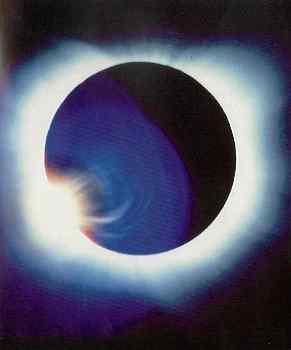
 |
The Total Solar Eclipse
of August 11th, 1999
On eclipse day 9897 users visited this page
The total solar eclipse of August 11th 1999
as seen from space

Animation
600KB 1,7MB
and as observed from the ground

Animation
600KB 1,2MB
| The total solar eclipse on August 11th, 1999 has had great impact on the news media. In the western parts and in the very eastern parts of the path along the Austrian territory, visibility was quite good and reminded very much to Adalbert Stifter's eclipse description wellknown in German literature. Only in 2081 a similar event can be observed from the western parts of Austria. All those who became interested in eclipse chasing have to follow the path of totality during the next years abroad. |
| Eclipse observations have a long standing tradition in Austria: |
|
|
| The Austrian capital Vienna was situated marginally outside the path of totality. In the southern parts of the city the sun was obscured 99% by the moon, while in the northern parts of Vienna only 98% of the sun was eclipsed. The solar corona and the atmospheric phenomenon of Shadow bands only could be observed along the path of totality. However a light dimming effect could be visualized by most observers in all Austria. |
| Summarizing our impressions: | It was an event of deep impact on our fellow citizens, who had seen a solar eclipse for the first time. |
| for their help |
Last updated 18.11.1999